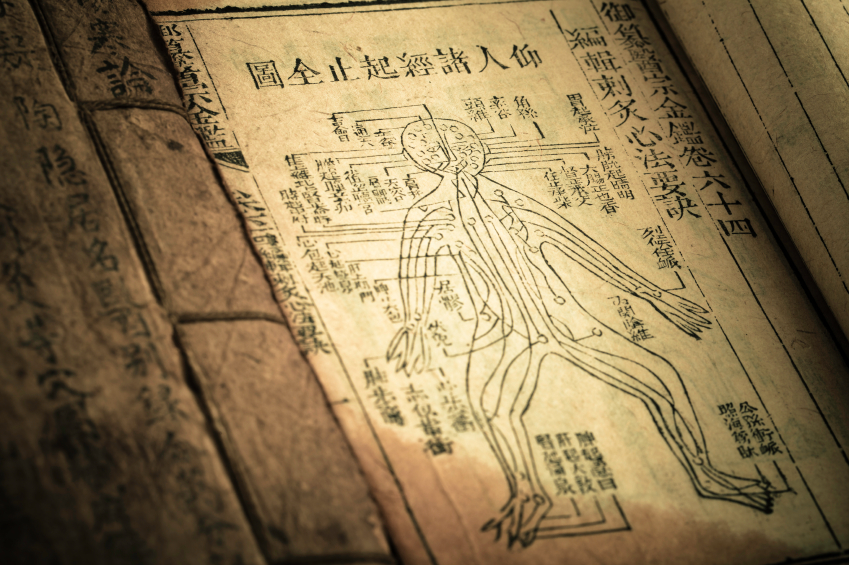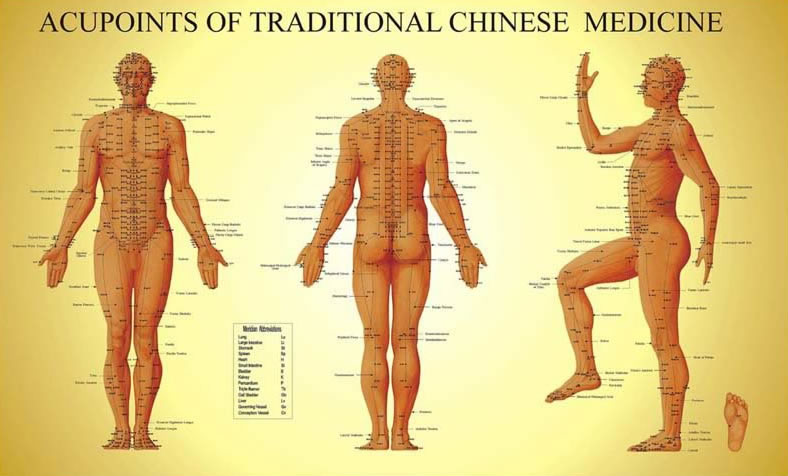I’m sure you’re at least somewhat familiar with Chinese medicine and acupuncture by now. It’s received a lot of media coverage over the last decade. Insurance companies are now covering it Australia wide and practitioners are regulated by the same national registration board as that of western medical doctors. But even though an increasing number of people are using acupuncture to address their health problems, most still don’t understand how Chinese medicine works.
We’ve been told that Chinese medicine involves mysterious energy called “qi” circulating through invisible “meridians” in the body. When the flow of qi through our meridians becomes blocked, illness results. The purpose of acupuncture and other Chinese medical therapies (like herbal medicine and qi gong) is to promote the proper flow of qi through the meridians, thus restoring health. Sound familiar?
If you’ve ever been to an acupuncturist in the west, I’m sure you’ve received some version of this explanation. After all, this is what they teach in acupuncture school. I know this because I’m in my final semester of studying Chinese medicine, and this is the explanation in our textbooks.
Understandably, these fundamental concepts of Chinese medicine have been difficult for western patients and doctors to accept. If you sit a doctor down who has had ten years of post-graduate medical training and tell him that an unidentified energy called qi flowing through imaginary meridians is the key to health and disease, he’s going to look at you like you’re crazy. And I don’t blame him.
What if I told you that nearly everything we’ve been taught in the West about how Chinese medicine works isn’t accurate?
What if I told you that Chinese medicine isn’t a woo-woo, esoteric “energy medicine” at all, but instead a functional, “flesh and bones” medicine based on the same basic physiology as western medicine? And what if I told you I could explain the mechanisms of Chinese medicine in simple, familiar terms that any eight year-old could understand and even the most skeptical, conservative doctor couldn’t argue with?
Here’s the thing. The “energy meridian” model that has become the default explanation of Chinese medicine in the west is not only out of sync with our modern, scientific understanding of the body – it’s also completely inconsistent with classical Chinese medical theory. In other words, we’ve made up our own western version of Chinese medicine that has little to do with how it was understood and practiced since it began more than 3,000 years ago in China
Chinese medicine is in fact a complete system of medicine that has successfully treated many common health conditions for more than 2,500 years. Chinese medicine was passed through the ages in an unbroken lineage of some of the best minds of China. It was used by emperors and the royal courts to help them live into their 90s and stay fertile into their 80s at a time when the average life expectancy in the west was 30 years.
The Chinese were performing detailed human dissections where they carefully measured the blood vessels and weighed the internal organs at a time when western physicians thought the body was made up of “humors”. These dissections helped Chinese physicians to discover the phenomenon of continuous blood circulation 2,000 years before it was discovered in the west. The discovery of blood circulation is still considered the single most important event in the history of medicine.
Much of what we know about Chinese medicine comes from a book called the Huangdi Neijing (HDNJ), or Yellow Emperor’s Internal Classic. There’s some controversy about when it was written, but most scholars agree that it was about 2,000 years ago, sometime between the second and first century BCE. The HDNJ is a massive encyclopedic text of Chinese medicine. You can think of it as their version of the Merck Manual.
The HDNJ had several sections. One was on anatomy. The Chinese were performing detailed dissections 500 years before the birth of Christ. They listed the average weight, volume and measurements for all of the internal organs. They named the organs and described their functions. (In fact, they knew that the heart is the organ that pumps blood through the body more than 2,000 years ago. This wasn’t discovered in western medicine until the early 16th century.) They knew which vessels flowed away from the heart, which vessels flowed toward the heart, and which vessels supplied which organs.
The HDNJ also had detailed sections on pathology. They described how diseases develop and how to treat those diseases with acupuncture, herbal medicine, massage and dietary and lifestyle changes. In short, the Chinese were practicing truly preventative medicine 2,500 years before the term was even coined.
The HDNJ is a remarkable book. But early western scholars had a problem. The HDNJ is written in a dialect of Chinese that hasn’t been in common use in China for more than a thousand years. You could show it to a modern Chinese person and they wouldn’t be able to read it.
A French gentleman, Soulie de Morant returned to France after several years in China. He had a passion for Chinese culture and had the intention of teaching Chinese medicine to French physicians. Conveniently, he promoted the idea that Chinese medicine didn’t require an understanding of anatomy and physiology. After all, de Morant was a bank clerk – not a physician – and had no medical training or qualifications to teach medicine at all.
But de Morant did know something about Ayurveda, the traditional Indian medicine based on the idea of energy called “prana” flowing through invisible lines called “nadis”. De Morant applied these concepts to Chinese medicine, even though they are not found in the Huangdi Neijing (HDNJ) or any other classical Chinese medical text.
The main problem with de Morant’s version of Chinese medicine was his representation of qi as “energy”. Almost all of the misunderstanding about Chinese medicine revolves around this mistranslation – which continues to be used despite historical facts that clearly contradict it.
Therfore, the commonly accepted idea in the west that Chinese medicine is an energetic, metaphysical medicine was singlehandedly created by a French bank clerk with no training in medicine or ancient Chinese language. It is neither historically accurate nor consistent with modern scientific understanding of the body.
In the Huangdi Neijing, the Chinese describe the lungs breathing in what they call “da qi”. If you look up da qi in a Chinese dictionary, you’ll see it defined as “great air”. The Chinese explained that the lungs breathed in air, and the lungs extracted the qi from the da qi.
What do our lungs get from the air that sustains life? Oxygen.
Of course the Chinese hadn’t identified the molecule we know as oxygen 2,000 years ago. They didn’t have the technology for that. But they did understand that we extracted something essential to life from the air we breathed, and they knew that this vital air (qi) was circulated around the body to support physiological processes. Therefore the closest translation of qi in a modern medical context is not energy, but oxygen.
The Chinese also described how this oxygen (qi) gets around the body: through the blood. They knew this from the dissections they had performed. The blood of the ancient Chinese is exactly the same as the blood of the 21st century! They knew blood circulated through blood vessels and the vascular system, which they had painstakingly identified and measured.
The word the Chinese used for vessel in the HDNJ is “mai”. Mai is correctly translated as vessel. “Xue Mai” is correctly translated as blood vessel (xue = blood). Morant took the word mai and incorrectly translated it as the French word “meridian”. He did this in spite of the fact that there was no word for meridian in the ancient Chinese language.
De Morant also photographed ancient diagrams of acupuncture points depicted on the body. He then drew a line between all of the points, creating the concept of a meridian system for the first time. Meridian systems aren’t in the original texts. The original texts have drawings of major arteries going from the trunk into the legs. The points are arranged along these arterial routes.
The word De Morant translated as point is “jie”. Jie is more correctly translated as node, neurovascular node, or critical juncture. The Chinese knew that these nodes represent areas of fine vascular structures (arterioles, capillaries and venules – although they didn’t call them this at the time) and related nerves. Even 2,500 years ago, the superficial nodes were recognized to have afferent and efferent neural properties.
Modern research has demonstrated that neurovascular nodes (acupuncture points) contain a high concentration of sensory fibers, fine blood vessels, fine lymphatic vessels, and mast cells. These nodes are distributed along longitudinal pathways of the body where the collateral blood vessels supply the capillaries and fine vessels. The corneum stratum of the skin in these areas is slightly thinner with a lower electrical resistance. They also contain more sensory nerves, and have more fine vessels with sequestered mast cells than non nodes. 5
Ancient Chinese physicians recognized that neurovascular nodes (acupuncture points) on the surface of the body could reflect disease conditions in the internal organs, and that these same nodes could be stimulated to relieve pain and treat internal organ problems. This was a revolutionary discovery that formed the theoretical basis for acupuncture treatment.
(Many thanks to Chrs Kresser for his insightful account of Chinese medicine origins)
Location
Family Tree Acupuncture
1524 Nepean Hwy
Mount Eliza Vic 3930
03 8796 3262
Contact
Family Tree Acupuncture
enquiries@familytreeacupuncture.com.au
Book your appointment
Bub & Bloom
lainey@bubandbloom.com
Book your workshop
Disclaimer: All information contained on this website is intended for informational and educational purposes only. Well Woman and its employees and affiliates are presenting facts for informational purposes only and is not intended to be a replacement or substitute for professional medical treatment or advice. Always seek the advice of your GP or specialist physician with respect to your medical condition or questions. This site does not promote self-diagnosis nor self medication.
Copyright Family Tree Acupuncture 2020. All Rights Reserved.


